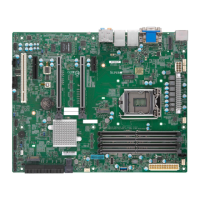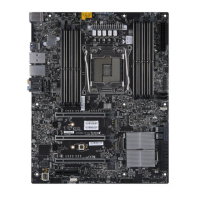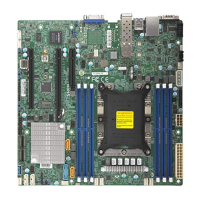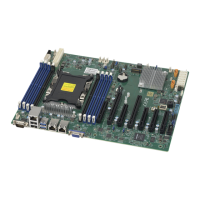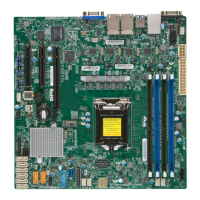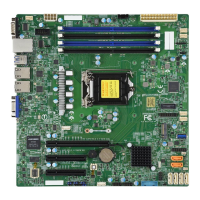15
Chapter 1: Introduction
Note: The table above is continued on the next page.
Motherboard Features
Peripheral Devices
• One (1) USB 2.0 port on the rear I/O panel (USB0/1)
• Two (2) internal USB 2.0 header with two (2) USB connections on the motherboard for front access (USB2/3, USB4/5)
• One (1) USB 3.0 port on the rear I/O panel (USB6/7)
• One (1) USB 3.1 port on the rear I/O panel (USB12/13)
• Two (2) internal USB 3.0 header with two (2) USB connections on the motherboard for front access (USB8/9, USB 10/11)
BIOS
• 128 Mb SPI AMI BIOS
®
SM Flash UEFI BIOS
• ACPI3.0, SMBIOS 2.7, Plug-and-Play (PnP), BIOS Rescue Hot-key, PCI F/W 3.0, RTC wakeup,
Power Management
• Power button override mechanism
• Power-on mode for AC power recovery
• ACPI Management
• Wake-On-Ring
• Wake-On-LAN
• Keyboard wakeup from S5
• Management Engine (ME)
System Health Monitoring
• Onboard voltage monitoring for +3.3V, 3.3V standby, +5V, +12V, VBAT, CPU, Memory, PCH Temp., PCH Core, System
Temp.
• CPU Thermal Design Power (TDP) support of up to 145W (See Note 1 on next page.)
Fan Control
• Fan status monitoring via SIO
• Single cooling zone
• Low-noise fan speed control
• Pulse Width Modulation (PWM) fan control
System Management
• Trusted Platform Module (TPM) support
• PECI (Platform Environment Control Interface) 2.0 support
• System resource alert via SuperDoctor® 5
• SuperDoctor® 5, Watch Dog, NMI
• Chassis intrusion header and detection
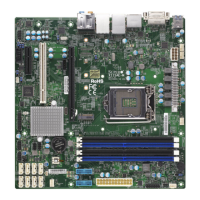
